
Punta del Este: The Jewel of Uruguay's Coastline
Discover Punta del Este, Uruguay's premier resort city known for its stunning beaches, vibrant nightlife, and rich cultural scene – a perfect blend of relaxation and excitement.
Punta del Este, often referred to as the 'St. Tropez of South America,' is a vibrant and luxurious resort city located on the southeastern coast of Uruguay. Boasting pristine beaches, high-end restaurants, and a lively nightlife, Punta del Este offers a perfect blend of relaxation and excitement. The city is famous for its two distinct coastlines. Playa Mansa, with its calm waters, is ideal for swimming and sunbathing, making it perfect for families and those looking to unwind. On the other hand, Playa Brava is known for its powerful waves, attracting surfers and adventure seekers from around the world. The iconic 'La Mano' sculpture, emerging from the sands of Playa Brava, is a must-see landmark that symbolizes the city's unique artistic flair. Beyond its beaches, Punta del Este is home to a thriving cultural scene. The city hosts numerous art galleries, museums, and the renowned Casa Pueblo, a stunning white-washed building created by artist Carlos Páez Vilaró. Visitors can also explore the bustling harbor, where luxury yachts dock, and enjoy delicious seafood at the local eateries. For those who enjoy shopping, Avenida Gorlero offers a plethora of boutiques, shops, and markets. When the sun sets, Punta del Este's nightlife comes alive. From chic beach clubs to sophisticated casinos, there are endless options for entertainment. Whether you're dancing the night away or enjoying a quiet evening at a seaside bar, the city promises unforgettable memories.
Local tips in Punta del Este
- Visit in the summer months (December to March) for the best weather and vibrant atmosphere.
- Book accommodations well in advance, as the city is a popular destination and rooms fill up quickly.
- Take a day trip to Isla de Lobos to see the largest sea lion colony in the Southern Hemisphere.
- Rent a bicycle to explore the city and its picturesque surroundings at your own pace.
- Try the local specialty, Chivito – a delicious Uruguayan sandwich that is a must-taste.
- Keep an eye out for local festivals and events, such as the Punta del Este International Jazz Festival.
Punta del Este: The Jewel of Uruguay's Coastline
Punta del Este, often referred to as the 'St. Tropez of South America,' is a vibrant and luxurious resort city located on the southeastern coast of Uruguay. Boasting pristine beaches, high-end restaurants, and a lively nightlife, Punta del Este offers a perfect blend of relaxation and excitement. The city is famous for its two distinct coastlines. Playa Mansa, with its calm waters, is ideal for swimming and sunbathing, making it perfect for families and those looking to unwind. On the other hand, Playa Brava is known for its powerful waves, attracting surfers and adventure seekers from around the world. The iconic 'La Mano' sculpture, emerging from the sands of Playa Brava, is a must-see landmark that symbolizes the city's unique artistic flair. Beyond its beaches, Punta del Este is home to a thriving cultural scene. The city hosts numerous art galleries, museums, and the renowned Casa Pueblo, a stunning white-washed building created by artist Carlos Páez Vilaró. Visitors can also explore the bustling harbor, where luxury yachts dock, and enjoy delicious seafood at the local eateries. For those who enjoy shopping, Avenida Gorlero offers a plethora of boutiques, shops, and markets. When the sun sets, Punta del Este's nightlife comes alive. From chic beach clubs to sophisticated casinos, there are endless options for entertainment. Whether you're dancing the night away or enjoying a quiet evening at a seaside bar, the city promises unforgettable memories.
When is the best time to go to Punta del Este?
Iconic landmarks you can’t miss
The Fingers of Punta del Este
Discover the stunning Fingers of Punta del Este, a unique sculpture on Brava Beach that beautifully merges art with nature, capturing the essence of Uruguay.
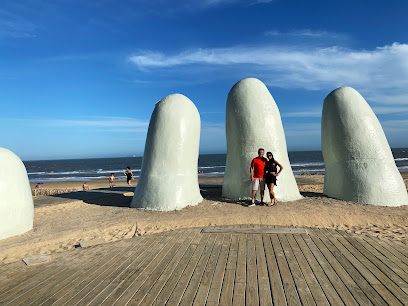
Enjoy Punta del Este Resort y Casino
Discover unmatched luxury and entertainment at Enjoy Punta del Este Resort y Casino, a premier destination on Uruguay's stunning coastline.
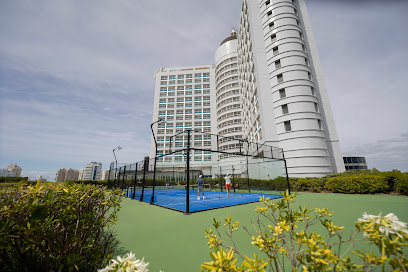
El Jagüel Park
Discover the serene beauty of El Jagüel Park in Punta del Este, a perfect retreat for nature lovers and families looking for tranquility.
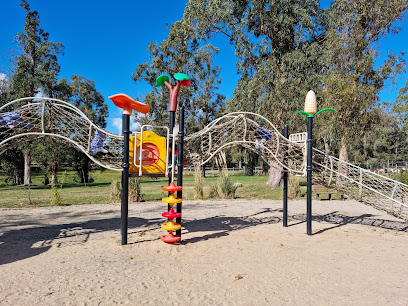
Parador Imarangatu
Discover the culinary gem of Punta del Este at Parador Imarangatu, where exquisite flavors meet a vibrant atmosphere along Uruguay's beautiful coast.
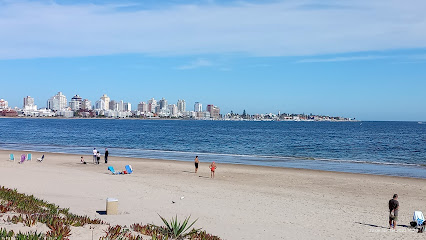
Punta Ballena
Experience the stunning beauty and vibrant culture of Punta Ballena, a coastal gem in Uruguay that promises adventure and relaxation for every traveler.
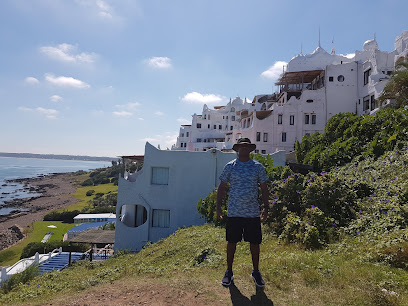
Capi Bar
Experience the vibrant flavors of local craft beer and delicious cuisine at Capi Bar, the ultimate brewpub destination in Punta del Este.
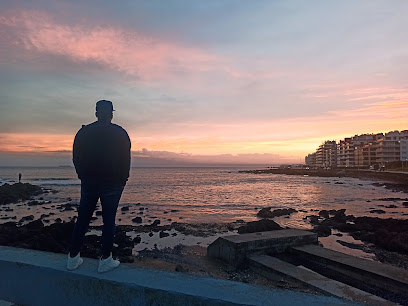
Puerto de Punta del Este
Explore the vibrant Puerto de Punta del Este, a breathtaking marina in Uruguay offering stunning views, delicious cuisine, and endless activities for tourists.
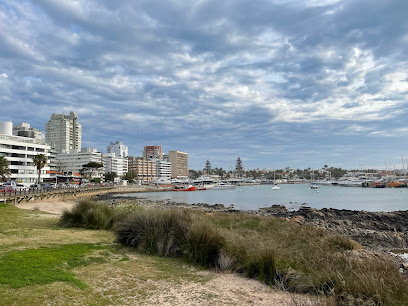
Museo del Mar
Explore Uruguay’s maritime history at Museo del Mar in La Barra, where captivating exhibits and interactive displays await every visitor.
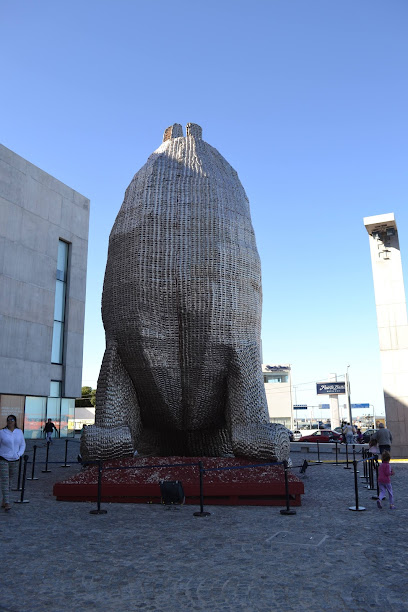
Great Britain Square
Explore the vibrant atmosphere of Great Britain Square in Punta del Este, a cultural hub with stunning views and exciting local experiences.
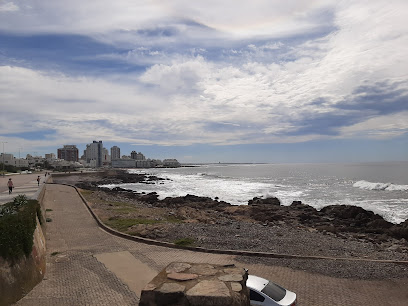
Museo Ralli Punta del Este
Explore the rich collection of modern Latin American art and Dalí sculptures at Museo Ralli in the heart of Punta del Este.
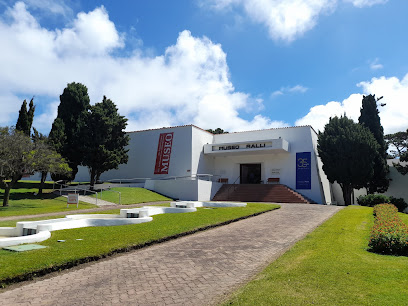
Restaurante El Tonel
Discover the flavors of Punta del Este at Restaurante El Tonel, where local cuisine meets a cozy atmosphere, perfect for every palate.
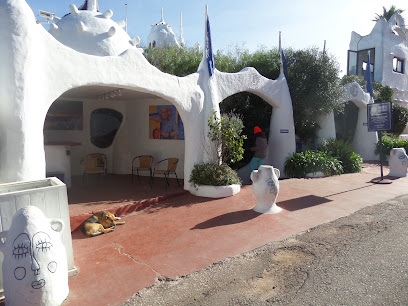
Restaurante La Vista
Discover the flavors of Uruguay at Restaurante La Vista in Punta del Este, where exquisite cuisine meets breathtaking ocean views.
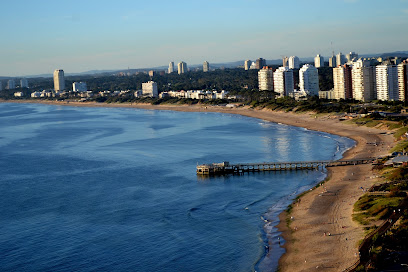
Our Lady of the Candelaria
Explore the architectural beauty and serene ambiance of Our Lady of the Candelaria, a must-visit Catholic church in Punta del Este, Uruguay.
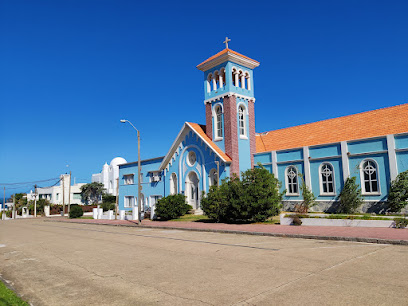
Playa Mansa
Discover the tranquility of Playa Mansa in Punta del Este, a beautiful public beach perfect for relaxation, family fun, and stunning ocean sunsets.
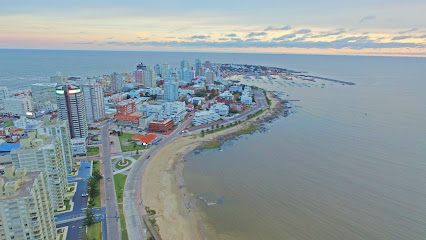
El Emir beach
Discover the charm of El Emir Beach, a vibrant public beach in Punta del Este, perfect for sunbathing, water sports, and enjoying local cuisine.
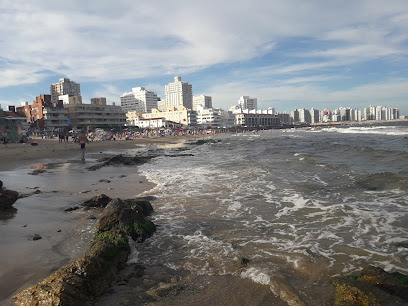
Unmissable attractions to see
The Fingers of Punta del Este
Explore the Fingers of Punta del Este, an iconic sculpture symbolizing the beauty of Uruguay's coastline and a must-see for every traveler.
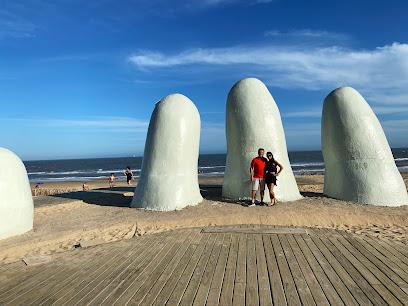
Enjoy Punta del Este Resort y Casino
Discover the luxurious Enjoy Punta del Este Resort y Casino, a perfect blend of relaxation, entertainment, and stunning coastal views in Uruguay.

El Jagüel Park
Explore the lush landscapes and tranquil lakes of El Jagüel Park, a must-visit natural oasis in Punta del Este, ideal for relaxation and outdoor activities.

Museo Casapueblo
Explore the artistic legacy of Carlos Páez Vilaró at Museo Casapueblo in Punta Ballena, where art meets breathtaking ocean views.
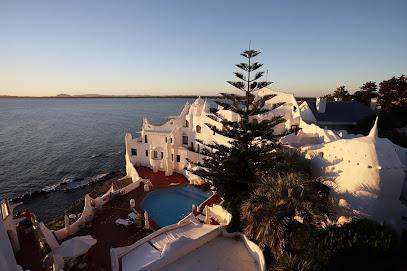
Castillo Pittamiglio Las Flores
Explore the whimsical Castillo Pittamiglio Las Flores, a historical landmark offering stunning architecture and breathtaking gardens in the heart of Maldonado, Uruguay.
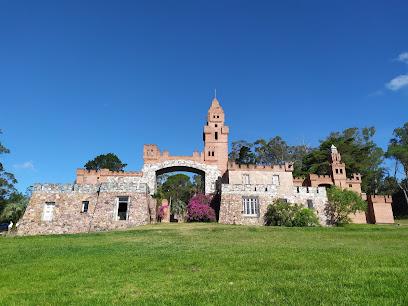
Francisco Piria Castle
Discover the rich history and stunning architecture of Francisco Piria Castle, an iconic landmark in Piriápolis, Uruguay that enchants every visitor.
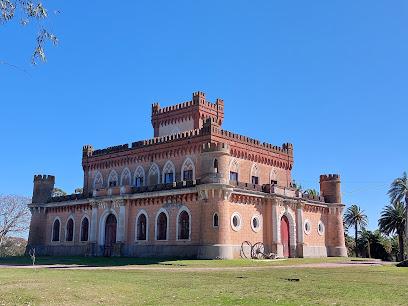
Fundación Pablo Atchugarry
Explore the intersection of art and nature at Fundación Pablo Atchugarry, a premier cultural center in Uruguay showcasing contemporary masterpieces and artistic serenity.
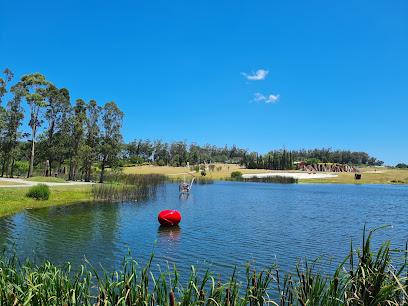
Puerto de Punta del Este
Experience the stunning beauty and vibrant atmosphere at Puerto de Punta del Este, a must-visit seaport on Uruguay's breathtaking coastline.
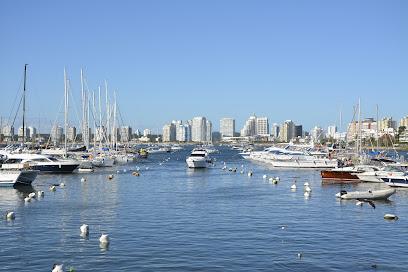
Las Grutas
Experience the stunning coastal views and vibrant gastronomy at Las Grutas, a must-visit tourist attraction in Punta Ballena, Uruguay.
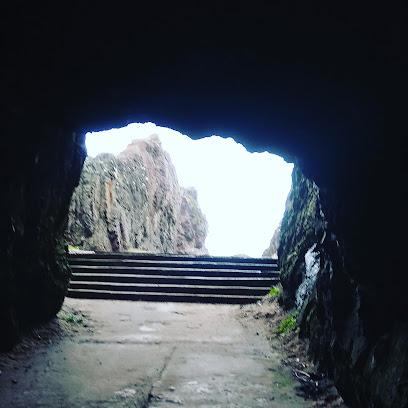
Museo del Mar
Explore the rich marine life and maritime history at Museo del Mar in La Barra, a captivating attraction for visitors of all ages.
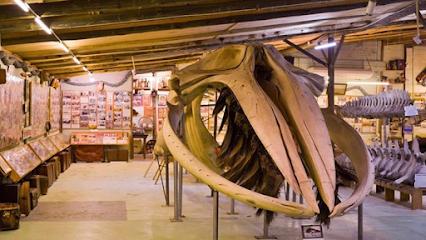
Municipal la Cascada Park
Explore the natural beauty and tranquility of Municipal la Cascada Park in Piriápolis, a perfect getaway for nature lovers and families alike.
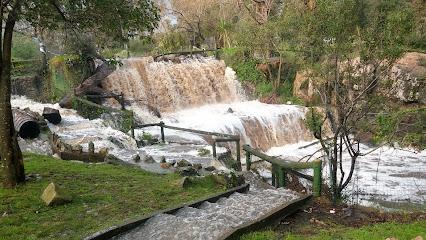
Rambla Piriapolis
Experience the beauty and charm of Rambla Piriapolis, a stunning waterfront promenade in Uruguay perfect for relaxation and adventure.
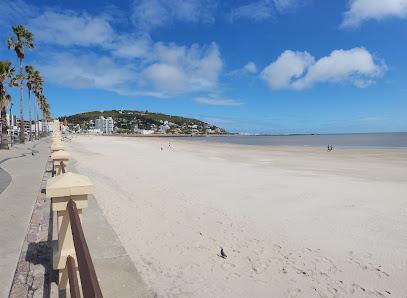
Punta Ballena Lookout Point
Discover the stunning Punta Ballena Lookout Point, where breathtaking ocean views meet delightful espresso in a serene coastal setting.
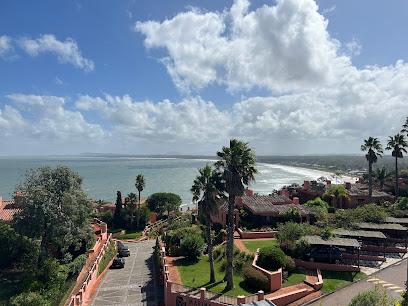
Museo Ralli Punta del Este
Explore the essence of Latin American contemporary art at Museo Ralli in Punta del Este, a captivating blend of culture and nature.
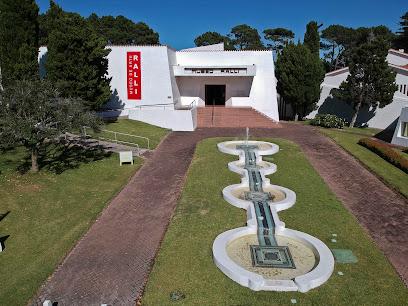
Montoya Beach
Experience the beauty and vibrancy of Montoya Beach in La Barra, where sun, sand, and sea come together for the perfect beach day.
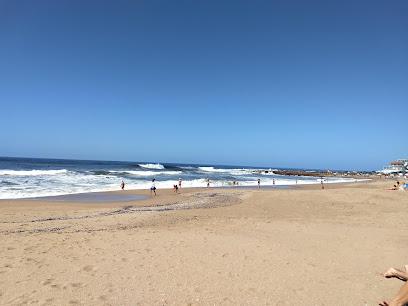
Essential places to dine
Parador Imarangatu
Experience culinary excellence at Parador Imarangatu in Punta del Este - where exquisite flavors meet vibrant atmosphere.
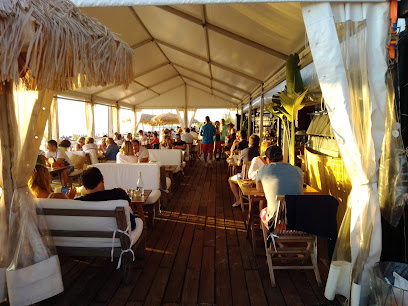
Virazón Puerto
Discover Virazón Puerto in Punta del Este - where exquisite seafood meets stunning ocean views for an unforgettable dining experience.

Capi Bar
Discover Capi Bar in Punta del Este: where local craft beers meet delicious cuisine in a vibrant brewpub atmosphere.
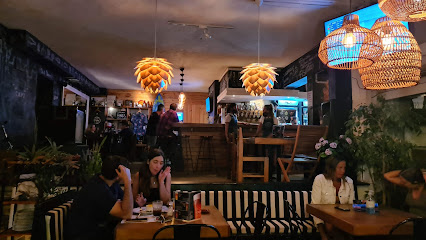
La Marea
Experience exquisite Uruguayan cuisine at La Marea in Punta del Este—where every meal is a celebration of flavor and elegance.
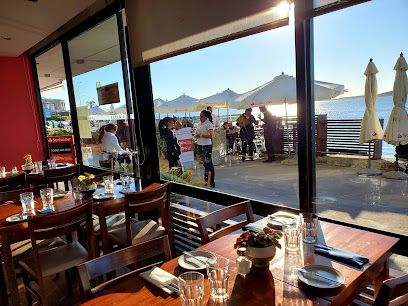
Guappa
Experience exquisite seafood and breathtaking ocean views at Guappa in Punta del Este's scenic Rambla.
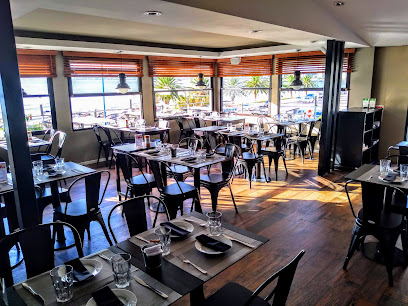
Restaurante El Tonel
Discover exquisite Uruguayan cuisine at Restaurante El Tonel in Punta del Este – where every meal is a delightful experience.

Rustic resto bar
Discover Rustic Resto Bar in Punta del Este: where cozy ambiance meets delicious cuisine and friendly service.
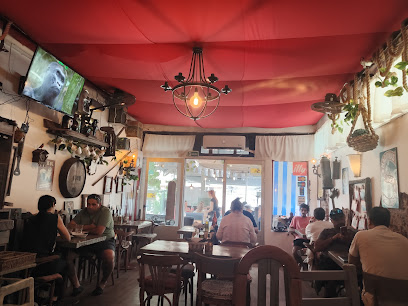
El Secreto
Discover El Secreto in Punta del Este: A fusion restaurant where exquisite sushi meets local flavors in an unforgettable seaside setting.
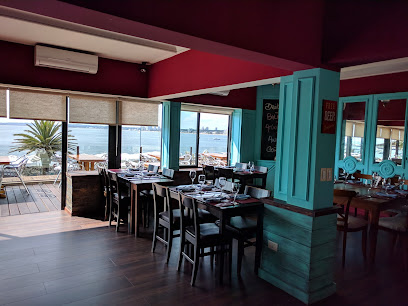
Restaurante La Vista
Experience exquisite dining with stunning views at Restaurante La Vista in Punta del Este - where culinary delights meet breathtaking scenery.
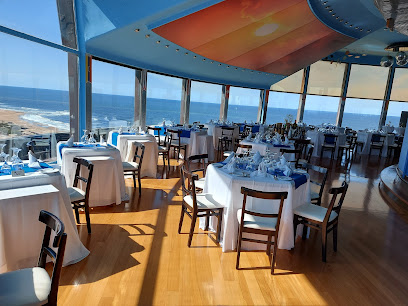
Muelle 3
Discover Muelle 3 in Punta del Este: An exquisite dining destination offering fresh seafood and breathtaking ocean views.

El Palenque
Experience authentic Uruguayan cuisine at El Palenque in Punta del Este - where tradition meets taste in a vibrant coastal setting.
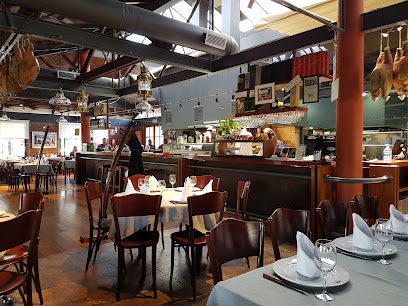
Miro Resto Bar
Discover Miro Resto Bar: A culinary gem in Punta del Este offering local flavors and international dishes in a vibrant setting.
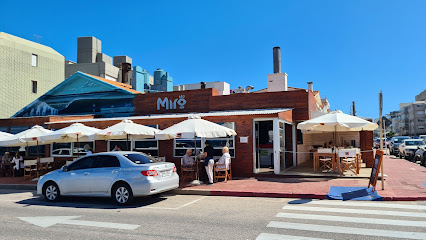
Posto 5
Experience exquisite seafood and breathtaking ocean views at Posto 5 in Punta del Este, a top-tier dining destination for tourists.
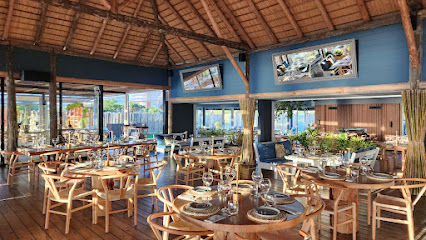
La Nueva Avenida
Discover La Nueva Avenida in Punta del Este – where traditional Uruguayan flavors meet warm hospitality for an unforgettable dining experience.
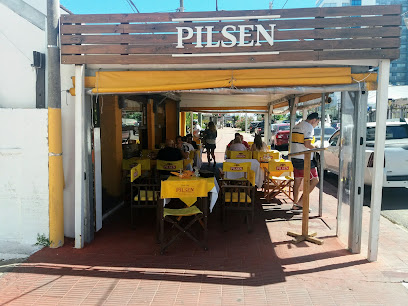
The Family
Discover authentic Uruguayan flavors at The Family in Punta del Este - where every meal is a celebration of local cuisine.
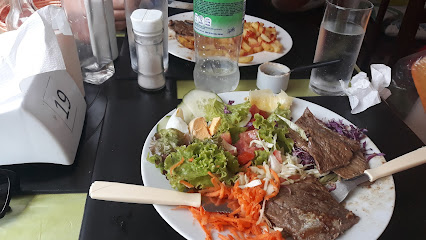
Markets, malls and hidden boutiques
Punta Shopping
Explore Punta Shopping in Punta del Este for an unforgettable shopping experience with dining and entertainment options amidst stunning coastal views.
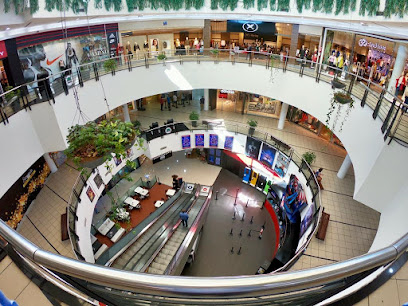
Tienda Inglesa
Discover the best of local and international products at Tienda Inglesa, Punta del Este's premier hypermarket experience.
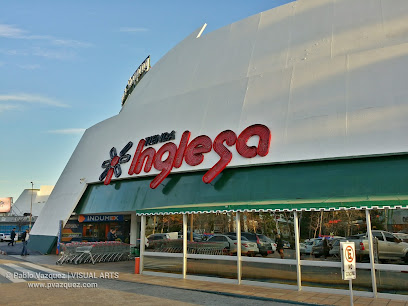
Corsetting.uy
Discover unique fashion and accessories at Corsetting.uy, the boutique gem of Punta del Este, where quality meets style.

LA OPERA – Gorlero
Discover fashion excellence at La Opera – Gorlero, the premier dress store in Punta del Este known for its stylish selection and vibrant atmosphere.
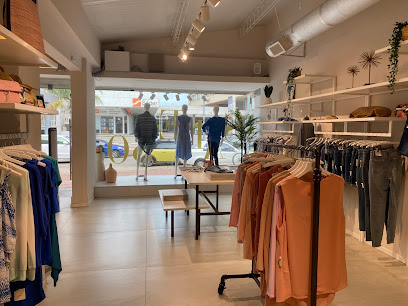
Canoa Quebrada
Discover unique souvenirs and local craftsmanship at Canoa Quebrada, the must-visit gift shop in Punta del Este, Uruguay.
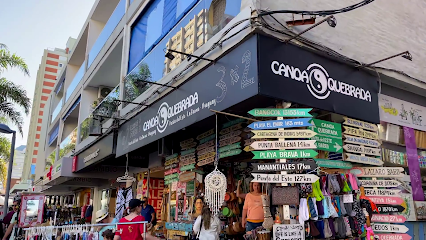
Bazar San José Punta del Este
Explore Bazar San José in Punta del Este for unique home goods, local crafts, and stylish decor that showcase the vibrant culture of Uruguay.
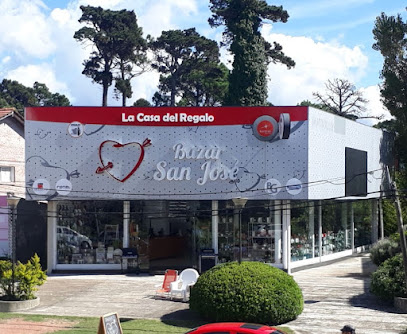
Punta outlet
Explore Punta Outlet - Punta del Este's premier shopping destination offering a blend of luxury and local finds in a vibrant atmosphere.
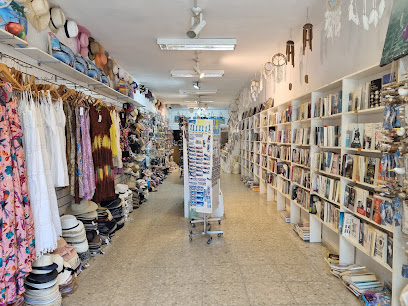
Valentino Punta del Este Uruguay
Discover the latest fashion trends at Valentino in Punta del Este, where style meets quality in a vibrant shopping experience.
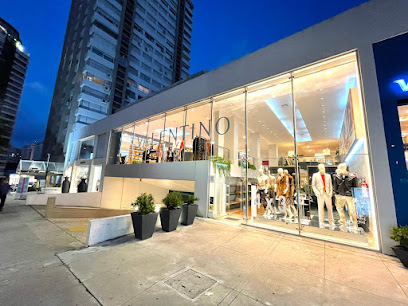
Hush Puppies
Explore Hush Puppies in Punta del Este for comfortable, stylish clothing and footwear that perfectly complements the coastal lifestyle.
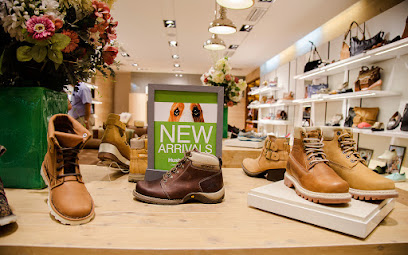
Xiaomi Store Punta Shopping
Experience cutting-edge technology at the Xiaomi Store in Punta Shopping - your ultimate destination for innovative gadgets and stylish home appliances.

LUNADELESTE
Discover LUNADELESTE in Punta del Este: A gift shop offering unique home goods and local artisan treasures for every traveler.
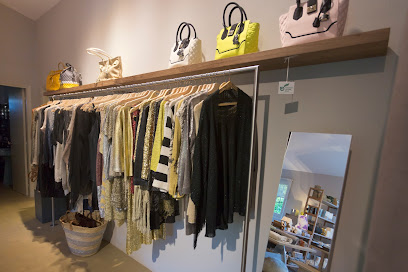
Nomad Punta del Este
Discover unique fashion pieces at Nomad Punta del Este, where style meets the vibrant culture of this coastal gem.
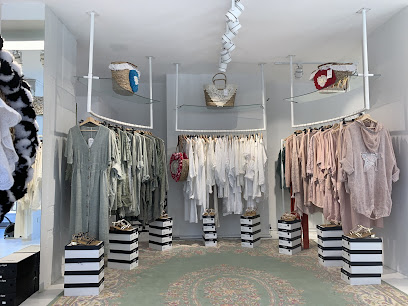
Guapa! Punta Shopping
Explore trendy women's fashion at Guapa! Punta Shopping, a stylish clothing destination in the heart of Punta del Este, Uruguay.
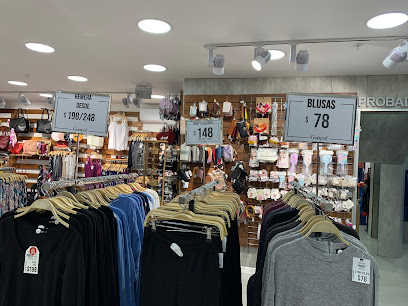
Siete Ángeles
Discover the essence of Uruguayan culture at Siete Ángeles, a boutique in Punta del Este offering exquisite fashion and artisan products.
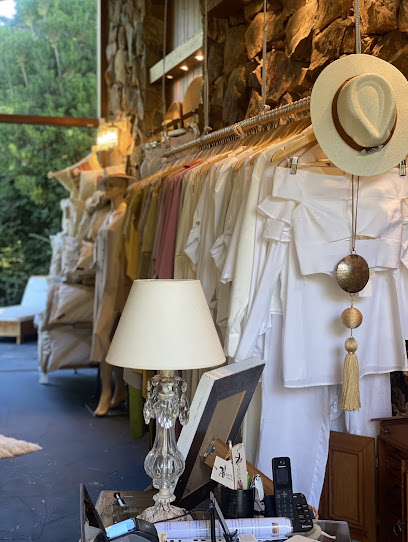
TITS
Explore the vibrant fashion scene at TITS, Punta del Este's premier clothing store for stylish beachwear and trendy casual attire.
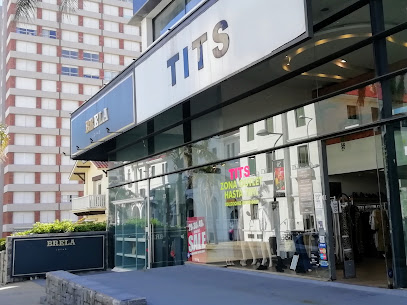
Essential bars & hidden hideouts
Parador Imarangatu
Discover the vibrant culinary scene at Parador Imarangatu, a top bar and restaurant in Punta del Este, offering exquisite dining and lively atmosphere.
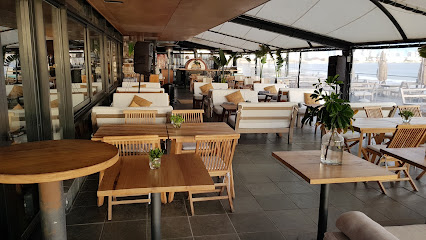
Moby Dick
Experience the vibrant atmosphere and exquisite cuisine at Moby Dick, a premier pub in Punta del Este, where every meal is a celebration.
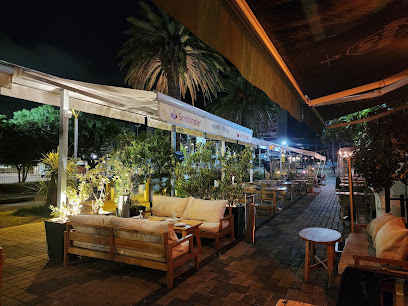
Capi Bar
Discover the vibrant Capi Bar in Punta del Este, a brewpub offering craft beers and delicious cuisine in a lively atmosphere.
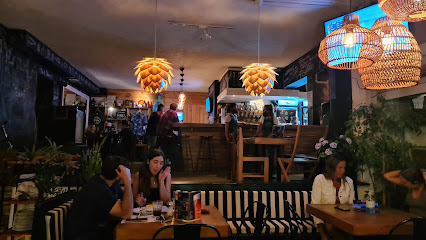
Rustic resto bar
Discover the charm of Rustic Resto Bar in Punta del Este, where local flavors meet a welcoming atmosphere for an unforgettable dining experience.
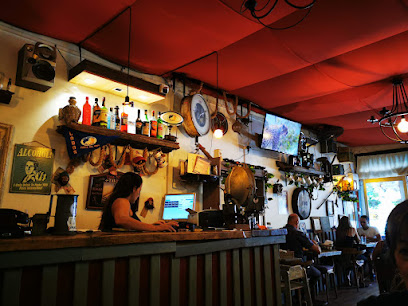
Miro Resto Bar
Experience Flavor and Elegance at Miro Resto Bar - Punta del Este's Premier Dining Destination.
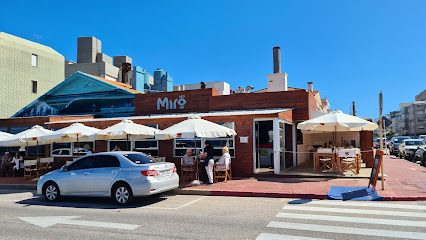
Manantiales Point Puerto
Discover the vibrant culinary scene and nightlife at Manantiales Point Puerto, a unique gastropub in Punta del Este offering exquisite food and lively entertainment.

Soho
Explore the vibrant nightlife at Soho, Punta del Este's premier nightclub and gastropub, where exquisite dining meets electrifying dance floors.
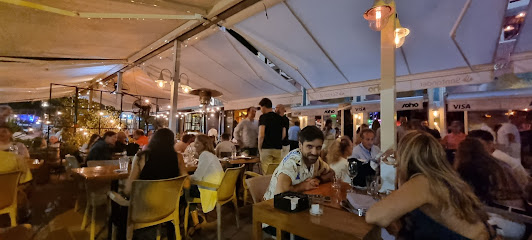
Ovo Beach
Experience the vibrant fusion of relaxation and nightlife at Ovo Beach, the ultimate beach bar and disco club in Punta del Este.
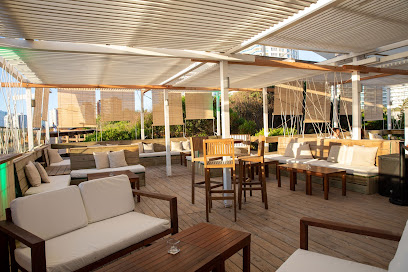
THE GOURMET POINT
Experience the vibrant tastes of Punta del Este at The Gourmet Point, a premier grill restaurant offering delicious dishes in a welcoming atmosphere.

Ocean Club
Dive into the vibrant nightlife of Punta del Este at Ocean Club, a premier bar and disco with stunning views and electrifying music.
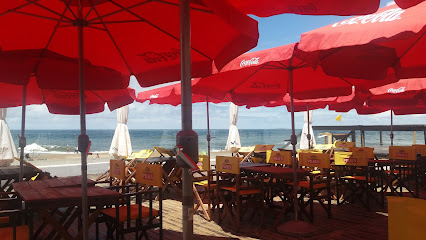
MBC Punta del Este
Discover the essence of craft brewing at MBC Punta del Este, a vibrant brewpub offering locally crafted beers and delicious food in a lively atmosphere.
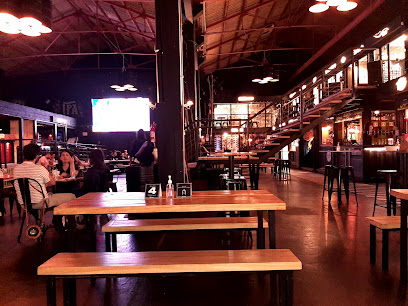
Blend Bar
Discover the vibrant nightlife at Blend Bar, Punta del Este's ultimate destination for cocktails, music, and unforgettable experiences.
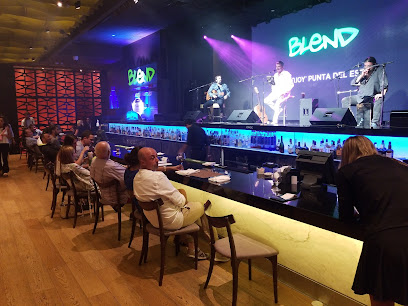
HUMA Rooftop Bar & Lounge
Discover the breathtaking views and vibrant nightlife at HUMA Rooftop Bar & Lounge in Punta del Este, a top destination for tourists seeking luxury and relaxation.
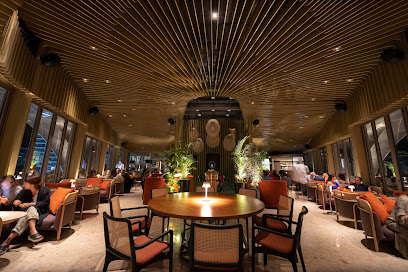
RODELU Punta Del Este
Discover RODELU in Punta Del Este, a lively bar offering exquisite cocktails and a vibrant nightlife experience in the heart of Uruguay's coastal gem.

Stand-By Snack Bar Punta del Este
Experience the vibrant nightlife and delicious local cuisine at Stand-By Snack Bar in Punta del Este, the heart of Uruguay's coastal culture.
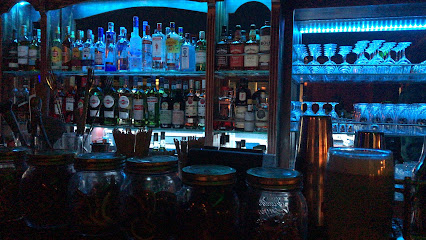
Local Phrases
-
- HelloHola
[oh-lah] - GoodbyeAdiós
[ah-dee-ohs] - YesSí
[see] - NoNo
[noh] - Please/You're welcomePor favor/De nada
[por fah-vor/deh nah-dah] - Thank youGracias
[grah-syahs] - Excuse me/SorryDisculpe/Perdón
[dee-skool-peh/pehr-dohn] - How are you?¿Cómo estás?
[koh-moh ehs-tahs] - Fine. And you?Bien. ¿Y tú?
[byen. ee too] - Do you speak English?¿Hablas inglés?
[ah-blahs een-glehs] - I don't understandNo entiendo
[noh ehn-tee-ehn-doh]
- HelloHola
-
- I'd like to see the menu, pleaseQuisiera ver el menú, por favor
[kee-see-eh-rah vehr ehl meh-noo, por fah-vor] - I don't eat meatNo como carne
[noh koh-moh kahr-neh] - Cheers!Salud!
[sah-loohd] - I would like to pay, pleaseMe gustaría pagar, por favor
[meh goos-tah-ree-ah pah-gahr, por fah-vor]
- I'd like to see the menu, pleaseQuisiera ver el menú, por favor
-
- Help!¡Ayuda!
[ah-yoo-dah] - Go away!¡Vete!
[veh-teh] - Call the Police!¡Llama a la policía!
[yah-mah ah lah poh-lee-see-ah] - Call a doctor!¡Llama a un médico!
[yah-mah ah oon meh-dee-koh] - I'm lostEstoy perdido
[ehs-toy pehr-dee-doh] - I'm illEstoy enfermo
[ehs-toy ehn-fehr-moh]
- Help!¡Ayuda!
-
- I'd like to buy...Quisiera comprar...
[kee-see-eh-rah kohm-prahr] - I'm just lookingSolo estoy mirando
[soh-loh ehs-toy mee-rahn-doh] - How much is it?¿Cuánto cuesta?
[kwan-toh kwehs-tah] - That's too expensiveEso es demasiado caro
[eh-soh ehs deh-mah-see-ah-doh kah-roh] - Can you lower the price?¿Puede bajar el precio?
[pweh-deh bah-har ehl pree-syoh]
- I'd like to buy...Quisiera comprar...
-
- What time is it?¿Qué hora es?
[keh oh-rah ehs] - It's one o'clockEs la una
[ehs lah oo-nah] - Half past (10)Media hora (10)
[meh-dee-ah oh-rah (deez)] - MorningMañana
[mah-nyah-nah] - AfternoonTarde
[tahr-deh] - EveningNoche
[noh-cheh] - YesterdayAyer
[ah-yehr] - TodayHoy
[oy] - TomorrowMañana
[mah-nyah-nah] - 1Uno
[oo-noh] - 2Dos
[dohs] - 3Tres
[trehs] - 4Cuatro
[kwah-troh] - 5Cinco
[seen-koh] - 6Seis
[says] - 7Siete
[syeh-teh] - 8Ocho
[oh-choh] - 9Nueve
[nweh-veh] - 10Diez
[dyehs]
- What time is it?¿Qué hora es?
-
- Where's a/the...?¿Dónde está el/la...?
[dohn-deh ehs-tah ehl/lah] - What's the address?¿Cuál es la dirección?
[kwahl ehs lah dee-rehk-syohn] - Can you show me (on the map)?¿Puedes mostrarme (en el mapa)?
[pweh-dehs mohs-trar-meh (ehn ehl mah-pah)] - When's the next (bus)?¿Cuándo es el próximo (autobús)?
[kwan-doh ehs ehl prohk-see-moh (ow-toh-boos)] - A ticket (to ....)Un boleto (a ...)
[oon boh-leh-toh (ah ...)]
- Where's a/the...?¿Dónde está el/la...?
History of Punta del Este
-
Before European settlers arrived, the region now known as Punta del Este was inhabited by the native Charrúa people. They were hunter-gatherers who lived off the land and sea, adapting to the coastal environment. Artifacts and archaeological findings in the area highlight their presence and way of life.
-
In the early 16th century, Spanish and Portuguese explorers arrived on the shores of what is now Punta del Este. The region's strategic location made it a point of interest for navigators and traders. Early maps from this period mark the area as a significant maritime landmark.
-
In 1755, the nearby city of Maldonado was founded by Spanish settlers. This event marked the beginning of European settlement in the region. Maldonado quickly developed as a key administrative and military center, influencing the development of the surrounding areas, including Punta del Este.
-
Punta del Este began its transformation into a resort town in the early 20th century. Wealthy families from Montevideo and Buenos Aires started to build summer homes along the coast. The construction of the Punta del Este Lighthouse in 1860 and the arrival of the railway in 1908 further boosted its popularity as a vacation destination.
-
The 1950s and 1960s were a golden age for Punta del Este. The town became a glamorous hotspot, attracting international celebrities, artists, and wealthy tourists. Iconic landmarks such as the Hotel San Rafael and the Conrad Punta del Este Resort & Casino were established during this period, solidifying the town's reputation as the 'St. Tropez of South America.'
-
Punta del Este has hosted significant international events, including the Punta del Este Conference in 1967, which led to the creation of the Latin American Free Trade Association. Another notable event was the Punta del Este Round in 1986, which was part of the General Agreement on Tariffs and Trade (GATT) negotiations that eventually led to the establishment of the World Trade Organization (WTO).
-
Punta del Este has a rich cultural scene. The town is home to numerous art galleries, cultural centers, and museums. Highlights include the Ralli Museum, showcasing contemporary Latin American art, and the Fundación Pablo Atchugarry, a cultural institution that promotes visual arts. The town also hosts the annual International Film Festival, drawing filmmakers and cinema enthusiasts from around the globe.
-
In recent decades, Punta del Este has continued to grow, with new luxury hotels, residential complexes, and marinas being built. The town has managed to maintain its charm while accommodating modern amenities. It remains a premier destination for tourists seeking beautiful beaches, vibrant nightlife, and a touch of elegance.
Punta del Este Essentials
-
Punta del Este is located in the Maldonado Department of Uruguay. The nearest international airport is Carrasco International Airport in Montevideo, approximately 120 kilometers away. From Montevideo, you can take a bus, taxi, or rent a car to reach Punta del Este. The bus journey typically takes around two hours and is operated by companies like COT and Copsa. Alternatively, you can also fly directly into Punta del Este's Laguna del Sauce Airport, which offers limited international and domestic flights, mainly during the high season.
-
Punta del Este offers various transportation options, including taxis, buses, and rental cars. Local buses are a cost-effective way to get around and cover most major areas. Taxis are readily available and can be hailed on the street or booked via phone. For more flexibility, consider renting a car to explore the surrounding areas at your own pace. Biking is also popular, and many hotels offer bike rentals. Walking is a pleasant option for exploring the city's beaches and central areas.
-
The official currency in Uruguay is the Uruguayan Peso (UYU). Credit cards are widely accepted in hotels, restaurants, and shops. However, it is advisable to carry some cash for smaller establishments and street vendors. ATMs are readily available throughout Punta del Este, and many offer the option to withdraw US dollars. Currency exchange services are available at banks and exchange bureaus.
-
Punta del Este is generally a safe destination for tourists. However, it is advisable to take standard precautions. Avoid walking alone at night in unfamiliar areas, and keep an eye on your belongings in crowded places, such as bus terminals and markets. While Punta del Este does not have significant high-crime areas, it is always best to stay vigilant and aware of your surroundings.
-
In case of emergency, dial 911 for immediate assistance. The city has medical facilities, including hospitals and clinics, that can handle various emergencies. It is recommended to have travel insurance that covers medical emergencies. For minor health issues, there are pharmacies open 24/7 where you can purchase over-the-counter medications.
-
Fashion: Do dress casually and comfortably, especially during the summer months. Swimwear is acceptable at the beach but not in public streets or restaurants. Religion: Do respect local customs and religious sites. Although Uruguay is largely secular, showing respect in places of worship is important. Public Transport: Do be courteous and offer your seat to elderly passengers if needed. Avoid loud conversations and eating on public transport. Greetings: Do greet people with a friendly 'Hola' or 'Buen día.' A handshake is common in more formal settings. Eating & Drinking: Do try local specialties like chivito and seafood. Don't forget to enjoy a traditional mate, but be mindful of how to handle and share it respectfully.
-
To experience Punta del Este like a local, visit the local markets such as Feria de los Artesanos, where you can buy handmade crafts and local produce. Engage with the locals, who are often friendly and willing to share tips about the best spots to visit. Don't miss the chance to explore the less-touristy beaches like Playa Brava and Playa Mansa for a more authentic experience. For a unique outing, visit the Casa Pueblo, a stunning villa and art gallery built by the Uruguayan artist Carlos Páez Vilaró.
Trending Landmark in Punta del Este
-
The Fingers of Punta del Este
-
Enjoy Punta del Este Resort y Casino
-
El Jagüel Park
-
Parador Imarangatu
-
Punta Ballena
-
Capi Bar
-
Puerto de Punta del Este
-
Museo del Mar
-
Great Britain Square
-
Museo Ralli Punta del Este
-
Restaurante El Tonel
-
Restaurante La Vista
-
Our Lady of the Candelaria
-
Playa Mansa
-
El Emir beach
Nearby Cities to Punta del Este
-
Things To Do in Maldonado
-
Things To Do in Montevideo
-
Things To Do in Colonia del Sacramento
-
Things To Do in La Plata
-
Things To Do in Buenos Aires
-
Things To Do in Fray Bentos
-
Things To Do in Tacuarembó
-
Things To Do in Mar del Plata
-
Things To Do in Rosario
-
Things To Do in Encarnacion
-
Things To Do in Carmen del Parana
-
Things To Do in Córdoba
-
Things To Do in Florianópolis
-
Things To Do in Villarrica
-
Things To Do in Puerto Iguazú













